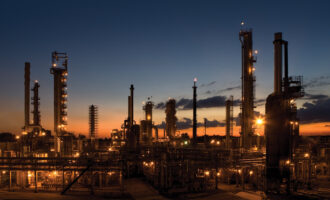Getting down to 10 microns
Many U.S. states adopt NIST Handbook 130, which requires the use of a 30-micron or smaller filter at the diesel fuel dispenser. But today’s high-pressure common rail systems in low-emission diesel engines have tighter tolerances, which require cleaner diesel fuel. Thus, there is a movement afoot to tighten this specification to 10 microns.
The Petroleum Marketers Association of America (PMAA), which represents 8,000 independent petroleum marketing companies who are wholesalers and retailers of gasoline, diesel, heating oil, lubricants and renewable fuels, has appealed to ASTM International, a voluntary standards organisation, whose specifications are widely referenced in the handbook, to implement 10-micron filters across the entire fuel distribution system. ASTM currently does not require this in its diesel fuel specification, ASTM D975. However, ASTM D975 requires diesel fuel to be visually free of particulates and suggests the use of a filter.
At the June D02 committee meeting in Fort Lauderdale, Fla., Matt Bjornson, PMAA board member and past chairman, delivered PMAA’s message to the diesel fuel subcommittee. PMAA’s position is that the filtration requirement across the fuel distribution system, from the refinery to the pipeline to the terminal and the retail pump, should be in the ASTM standard

“If they want 10-micron filtration at retail, then there should be 10-micron filtration throughout the whole system,” Bjornson said. “You’re talking filtering it at the refinery, which not all of them do. You’re talking about filtering it at the loading racks where we pick it up with our transports, which very few of them do.”
Currently, the need for filtration is stated in ASTM documents, but without a specific number. The 30-micron filter requirement is found in NIST Handbook 130, Uniform Laws and Regulations in the Areas of Legal Metrology and Engine Fuel Quality, which some states follow. Other states have adopted an earlier version, where the 30-micron filter is not a requirement, and some have not adopted it at all, according to Bjornson.
The U.S. fuel distribution system is intricate and includes 144 refineries, more than 322,000 kilometres of pipeline, more than 1,400 petroleum product terminals and more than 150,000 fuel retail outlets.
According to the September 2014 “Diesel Fuel Storage and Handling Guide,” Report 667 from the Coordinating Research Council (CRC), diesel fuel particulates can be produced when free water is present at the bottom of storage tanks or in pipelines. Particulates can also be generated from fuel additives and from corrosion of metal surfaces. Some cleaning processes, such as sending a cleaning tool through a pipeline, can also contribute contaminants.
Consequently, PMAA contends that particulates need to be cleaned up as the fuel moves along the fuel distribution system—not just at the retail point.
The desire to clean up diesel fuel is being driven, like many other changes, by tightening emissions standards. For instance, fuels with only 10-15 parts per-million (ppm) sulphur have been mandated in the U.S. and Europe to enable emission control technologies to work in advanced engines. However, reducing sulphur in fuel could have a negative effect on diesel fuel cleanliness and other unintended consequences, said Richard Chapman, industry liaison manager for Innospec Fuel Specialties.
This finding is paradoxical, since ultra-low sulphur diesel is also called “clean diesel.” But in pipelines and holding tanks, initial studies by the U.S. Environmental Protection Agency (EPA) found signs that the fuel may cause microbial growth-induced corrosion, which leads to particulates. There is a larger study underway to confirm this, with the results expected later this year.
Also, low-emission direct injection diesel engines commonly have a high pressure rail, with hot overflow fuel being sent back into the fuel loop, Chapman told the 2015 JSAE/SAE Powertrains, Fuels and Lubricants International Meeting in Kyoto, Japan in September. High pressure rails themselves are subject to corrosion and subsequent fuel degradation. Chapman described an inspection of one such rail that showed three- to 25- micron pitting due to corrosion, with those pits active sites for fuel degradation.

Innospec analysed fuel samples from various U.S. locations, which revealed the presence of sediment, water, soaps, salt deposits and other contaminants.
Chapman said keeping the fuel clean and dry would help prevent these. “The biggest thing we advocate is [good] housekeeping,” he said, which includes the use of 10- or 5-micron filters in fuel dispensers.
The American Petroleum Institute (API), the largest U.S. trade association for the oil and natural gas industry, has a similar position. According to spokesman Carlton Carroll, API sees no need to install filters at pipelines and terminals, as these facilities follow procedures which are outlined in API Recommended Practice 1640 to ensure that any contaminants settle at the bottom prior to fuel delivery.
“The fuel being stored in underground storage tanks at retail can be contaminated regardless of what fuel is delivered from the truck to the station. Good housekeeping practices, such as keeping water out, minimising microbial activity, and so on, and filters are the options that the marketers can implement to provide quality product to the end consumer,” Carroll said. Filters are the last line of defense against particulates, water and associated vehicle repair costs, he added.
The problem with the use of 10-micron filters at the fuel dispenser is fuel flow during cold temperatures, which can be exacerbated with biodiesel blends, Bjornson said. A study by Ft. Wayne, Indiana-based Research Laboratories, which was commissioned by PMAA, showed the results of 30- and 10- micron filters at fuel temperatures of 50, 30 and -10oF (10 to -23oC). The study involved different fuels: a standard U.S. ultra-low sulphur diesel, a five percent biodiesel blended with ultra-low sulphur diesel and the same two treated with additives.
The tests revealed no problems with either 30- or 10-micron filters at 50º and 30o F. But at -10ºF all of the filters became plugged or showed signs of plugging. The biodiesel blend had the worst performance, with the 10-micron filter becoming plugged after only 2.4 of the 10-gallon sample had passed through it.
For Bjornson, this problem is a particular concern since Bjornson Oil is based in North Dakota, close to the U.S.-Canada border, with temperatures as low as -40oF. While API insists that fuel stored in underground tanks doesn’t get that cold, Bjornson claims that fuel in the supply lines and dispenser can be much colder than fuel in the tank. He added that he himself has seen flow problems with 10-micron filters in the winter.
The debate over 10-micron versus 30-micron filters is just one of many issues relating to diesel fuel cleanliness. Whether ASTM will actually take it on remains a question.
“To address this issue it will take an industry wide effort as well as a multi-jurisdictional effort,” Bjornson says.
echo '






